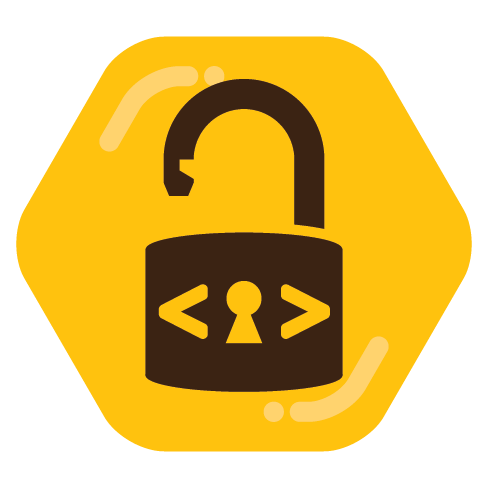

The way I read it, he was making it hard to remove the empty sidebar after blocking the ads in it.


The way I read it, he was making it hard to remove the empty sidebar after blocking the ads in it.


I’m confused what your issue is with the dev. He seems to have posted because uBO was breaking the site for premium users and then got told “just stop monetizing effectively.” Only one reply (don’t use such an obnoxious way to insert the ad sidebar) was actually helpful, though it was at odds with part of his monetization strategy (pay for Premium to get that extra space).
If uBO devs had said “Sure, give this account premium access and we’ll check it out” and he’d refused, that would be different, but instead they said there was nothing he could do to help them and banned him from participating.
It also doesn’t seem that he’s intentionally breaking the app when uBO is in use. Rather, uBO breaks the app when ads aren’t being served and he is now detecting when this happens and serving a message about the fact.
Does anyone know of similar image editors out there that can batch-crop images in a certain aspect ratio/resolution and then export them to webp?
Not similar, but Image Magick can crop images from the cli and has webp support.
Some more discussion on the topic: https://lemmy.blahaj.zone/post/32570282


I didn’t say it wasn’t convenient. I said it was counter intuitive.


That’s pretty much the standard.
Assuming OP has standard gestures enabled, they could still swipe from the left side.


I believe you set env vars on Windows through System Properties -> Advanced -> Environment Variables.


I believe you just need to set the env var OLLAMA_HOST to 0.0.0.0:11434 and then restart Ollama.


What OS is your server running? Do you have an Android phone or an iPhone?
In either case all you likely need to do is expose the port and then access your server by IP on that port with an appropriate client.
In Ollama you can expose the port to your local network by changing the bind address from 127.0.0.1 to 0.0.0.0
Regarding clients: on iOS you can use Enchanted or Apollo to connect to Ollama.
On Android there are likely comparable apps.
I hear more complaints about Windows from Windows users than from people who solely or primarily use other OSes. Unless you count “Okay… so why don’t you do something about it?” as a complaint, that is.
I think that makes you “the guy who really likes to talk about Linux.”
I’m a professional software engineer and I’ve been in the industry since before Kubernetes was first released, and I still found it overwhelming when I had to use it professionally.
I also can’t think of an instance when someone self-hosting would need it. Why did you end up looking into it?
I use Docker Compose for dozens of applications that range in complexity from “just run this service, expose it via my reverse proxy, and add my authentication middleware” to “in this stack, run this service with my custom configuration, a custom service I wrote myself or forked, and another service that I wrote a Dockerfile for; make this service accessible to this other service, but not to the reverse proxy; expose these endpoints to the auth middleware and for these endpoints, allow bypassing of the auth middleware if an API key is supplied.” And I could do much more complicated things with Docker if I needed to, so even for self-hosters with more complex use cases than mine, I question whether Kubernetes is the right fit.
Ah, gotcha. Nothing had been using them yet because I’d only just gotten the API key configured the day prior. But I already had Traefik running several dozen self hosted services that I use all the time, so the only “new” piece was adding API key support to Traefik.
One of my planned projects is an all-in-one, self-hostable, FOSS, AI augmented novel-planning, novel-writing, ebook and audiobook studio. I’m envisioning being able to replace Scrivener, Sudowrite, Vellum, and then also have an integrated audiobook studio, but making it so that at every step you could easily import or export artifacts to / from other tools.
Since I also run a tabletop RPG, and there’s a lot of overlap in terms of desirable functionality with novel planning and ttrpg planning, I plan to build it to be capable in that regard, too.
In both cases, the critical AI functionality that I want to implement (that afaik hasn’t been done well), is how to elegantly handle concepts from the world building section. For example:
Another critical feature is to have versioning, both automated and manual, such that a user can roll back to a previous version, tag points in time as Rough Draft, Second Draft, etc…
I’d also like to build an alpha / beta reader function - share a link and allow readers to give feedback (like comments in particular sections, highlights, emoji reactions, as well as reporting on things like reading behavior - they reread this section or went back after reading this section - that could be indicative of confusing writing), and also enable soliciting the same sort of feedback from AIs, and building tools to combine and analyze the feedback.
I could go on about the things I’d love to build in that app, but then I’d be here all day.
I don’t have that tool built yet, obviously, but it has a need to integrate with everything I’ve worked on - LLMs, embeddings, image generation, audio generation - heck, even video generation could be useful, but that’s a whole different story on its own.
That app will need to be able to connect to such services from the browser or the backend directly, depending on the user’s preferences and how the services are configured.
In the meantime, having API key support means I can use my self hosted services with other tools.
I’ve been pretty busy and haven’t really touched any of this in over a month now, but it’s certainly not for lack of use cases.
Why do you think I didn’t have a use case?
Can’t Keepass also generate TOTPs?
Proton doesn’t know that your password is 64 characters long because the hash will be the same length regardless. They also don’t know if you’ve reused your password on other sites.
Do you have two factor authentication set up? A lot of sites - Proton included - institute stricter security measures if you do not have 2FA enabled.


Claiming that GTA is responsible for mass shootings is an example of what pro-gun activists do in order to deflect the blame off of guns.


In fact, Redot has had 13 releases since the project started late last year.
With an absolutely massive number of commits since then.
An absolutely massive number of commits that were originally made to Godot, sure. Redot has 118 more commits than Godot as of the time of this writing (76,344 vs 76,266). That’s not even 1 original commit per day.


I genuinely don’t understand why people here are taking it so hard that I wish the Immich devs were using semver.
Because you didn’t say that; you said “Breaking changes in a point release? Not cool” and later “I’m basing this off the guidelines at semver.org.”
I’m paraphrasing your comments from memory, to be clear, so apologies if I misquoted you.
It certainly felt to me like you were assuming that this project was using semver and was not following it well, not that you wouldn’t want to use a project that receives this many breaking changes / that doesn’t follow semver. Those complaints both make a lot more sense to me - and I’ve seen many people say similar things about Immich in the past. In fact, it’s a big part of why I haven’t migrated from Photoprism to Immich myself - in this regard they’re complete opposites.


I don’t think there’s any room to argue that announcing a 1.x with a change the developers say is a breaking change, which is what Immich have done, fits within the semver.org guidelines.
That wasn’t the argument.
Following semver is optional. If a project doesn’t explicitly state it is following semver, it shouldn’t be assumed that it is. With regard to Immich in particular, a cursory review of their documentation makes it clear that they are not following semver. Literally, go to https://immich.app/ and read the text at the very top of the page:
⚠️ The project is under very active development. Expect bugs and changes.
Go to the repo and you’ll see the README, which states at the very top:
- ⚠️ The project is under very activedevelopment.
- ⚠️ Expect bugs and breaking changes.
If you can read that, see that they’re on major version 1 with a minor version over 100, and you still think they’re using semver, then that’s on you.
The devs have stated they won’t be using semver until they consider Immich production ready, and that moving to a 1.x version from 0.x was a mistake made some time ago. If you want to think about it as though it is semver, consider the major version to still be 0. See https://github.com/immich-app/immich/discussions/5086#discussioncomment-7593227 for example.
As this project is clearly not following semver, the semver guidelines aren’t applicable and haven’t been violated.
I don’t think there’s any room to argue
Even if semver were applicable, in this case, I would still disagree. The text from semver.org states:
8. Major version X (X.y.z | X > 0) MUST be incremented if any backward incompatible changes are introduced to the public API.
It doesn’t state that any backward incompatible changes, period, require a major version increase, only changes to the public API. I would personally argue that the deployment configuration is part of the public API, but not all project owners agree with me. Even if they do agree, they might say that this was not a documented deployment configuration and thus not part of the public API, and that it therefore doesn’t necessitate an increase to the major version, but as they knew that people were using that configuration, anyway, they included a note about a potentially breaking change as a courtesy to those users.
More like “Sure, but plenty of your non-techy friends and family do.” Otherwise the article wouldn’t have said that Mozilla needs to add a single toggle to disable all AI features to Firefox.